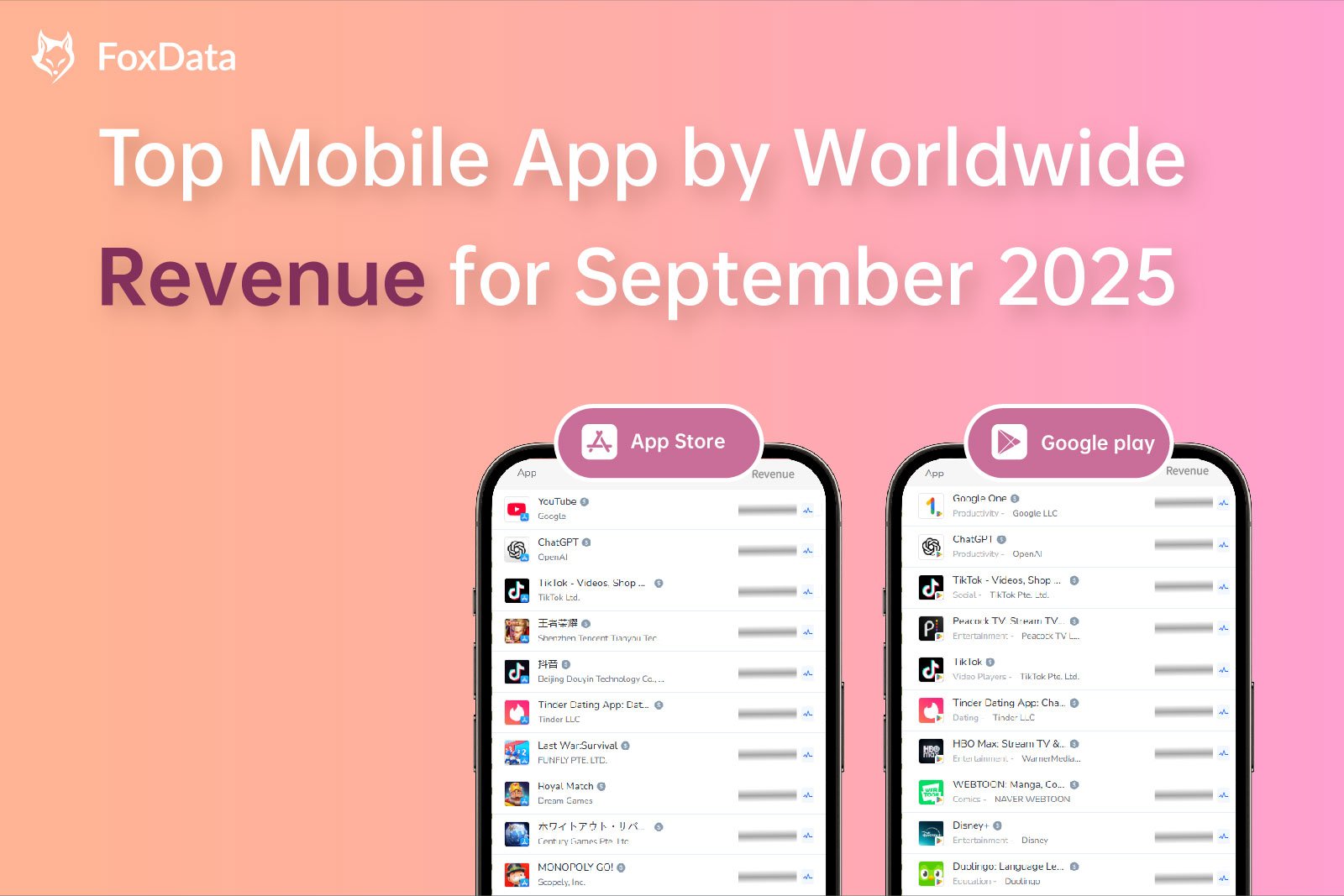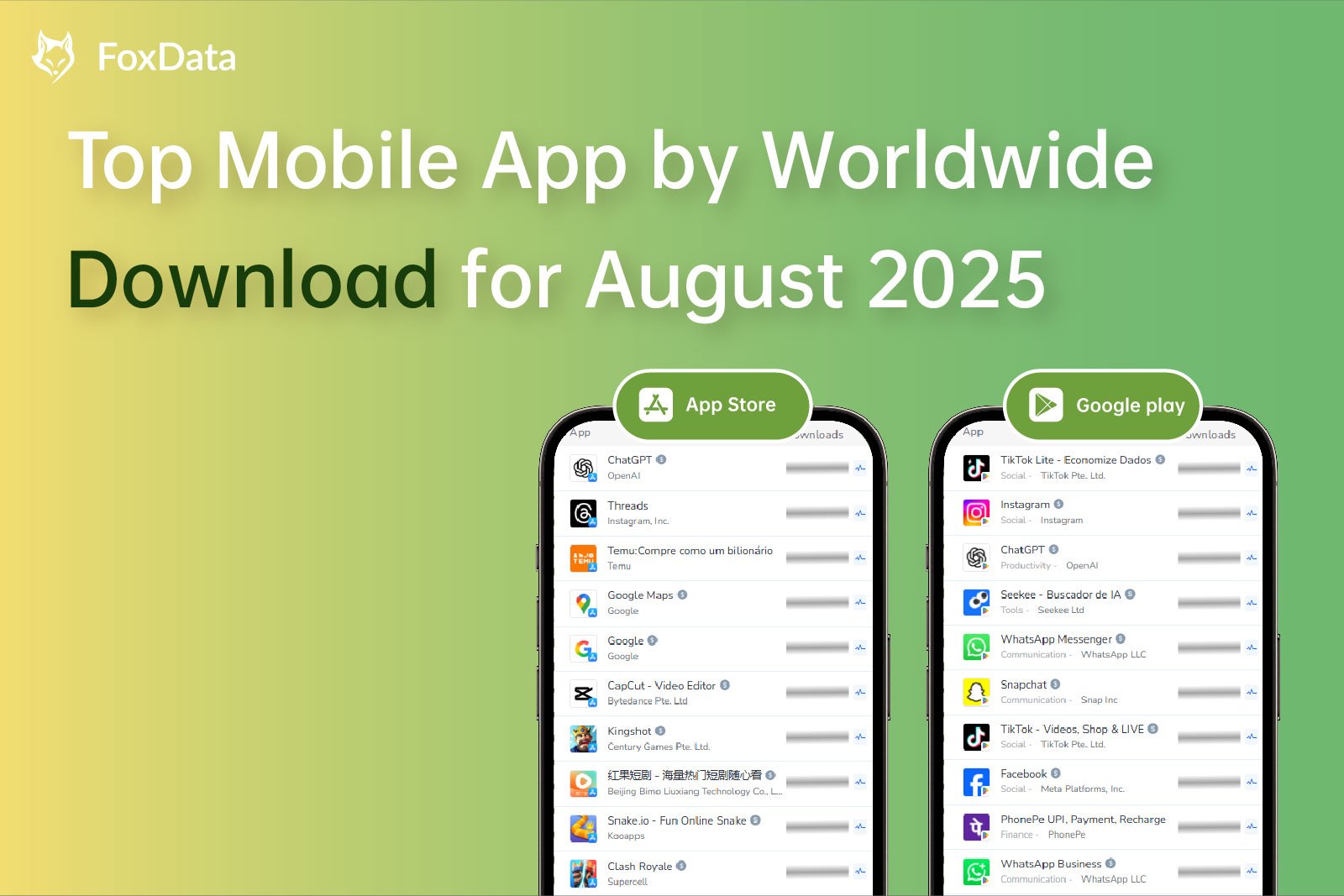How Candy Crush Saga Maintains Its Long-Standing Position at the Top of Revenue Charts
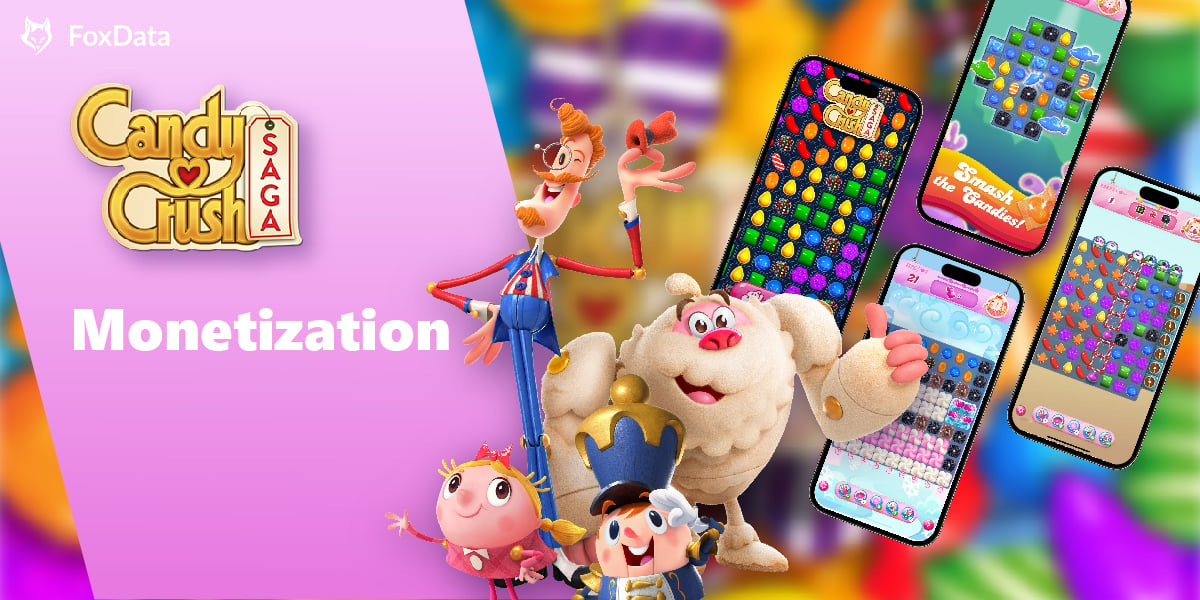
Candy Crush Saga is a highly successful game in terms of revenue, and it stands among the highest-grossing games in history.
Despite being over a decade old, it continues to generate millions annually. As a mobile game, it is not only one of the most well-known in its category but is also recognized as one of the most iconic video games globally.
Its widespread popularity is due in part to its appeal to a diverse audience, with people from various demographics and backgrounds enjoying the game.
This game consistently ranks in the Top 10 of monthly revenue charts for years.
Last month, unsurprisingly, it once again firmly held its place in the Top 10 on both the App Store and Google Play.
💡 Read More: Top Mobile Games by Worldwide Revenue for February 2025
Candy Crush Saga generated a staggering $869 million in revenue in just 2024.
The primary revenue contributors are the United States and the United Kindom.
How Does Candy Crush Generate Revenue?
In-App Purchases (IAPs)
Candy Crush, like many popular games, uses the Freemium Model to monetize. This strategy allows players to access the complete game for free, but they can choose to make in-game purchases. These purchases may include minor gameplay enhancements, such as boosters, which help players advance by removing barriers, or cosmetic enhancements like skins and costumes, which offer no gameplay advantage.
The Freemium Model is prevalent across the gaming industry, utilized by games like Honor of Kings, Fortnite, PUBG, and Clash of Clans. This model's success largely stems from voluntary payment: players aren't required to spend money to progress. Instead, they can finish the game without spending, although small initial purchases often lead players to choose larger transactions once they see the benefits.
Candy Crush employs the freemium model in a distinctive way. Players start with five lives, losing one each time they fail a level. Once all lives are depleted, a timer prevents further play until it expires. Players can choose to wait or bypass the timer by purchasing additional lives with gold bars, the game's currency, bought with real money. Other IAPs include boosters and power-ups, such as Lollipop and Lucky Candy, enhancing gameplay convenience.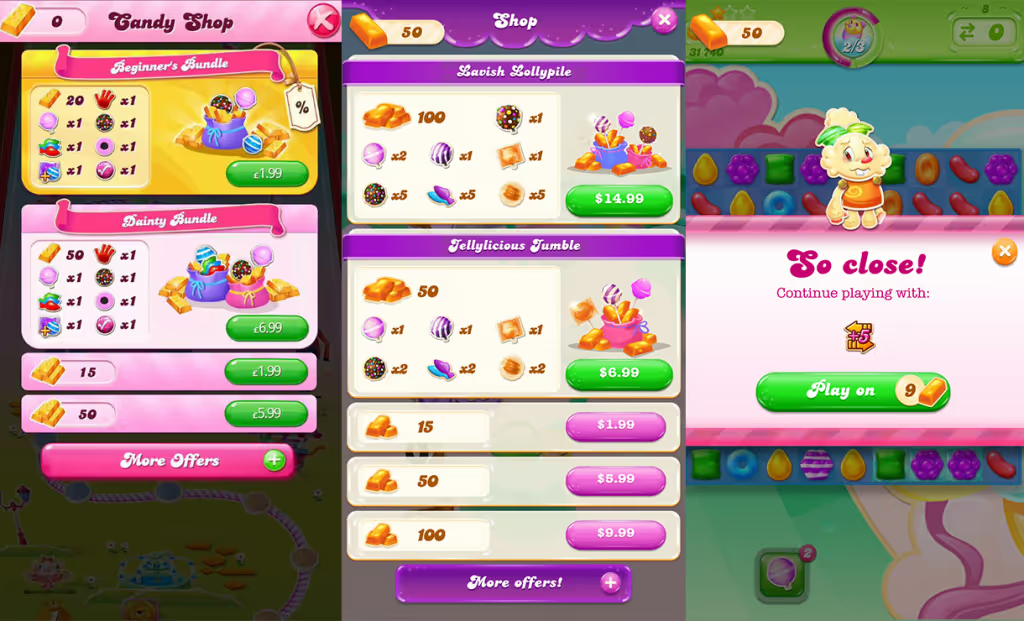
Alternative Monetization Models
Though freemium is Candy Crush's primary revenue model, King has explored other strategies. Initially, in-game advertisements were a significant revenue source. However, King removed ads in 2013, relying solely on in-app purchases until reintroducing ads in 2018.
Despite not being the main revenue stream, advertisements remain essential. Candy Crush uses Reward Ads—a form of in-game advertisement where players voluntarily watch 30-to-60-second ads in exchange for in-game rewards like boosters or gold bars. Being non-intrusive and beneficial, reward ads are well-received.
Additionally, Candy Crush has pursued partnerships for monetization. King has collaborated with franchises like Sonic and Space Jam, integrating franchise logos and characters within the game as part of promotional activities.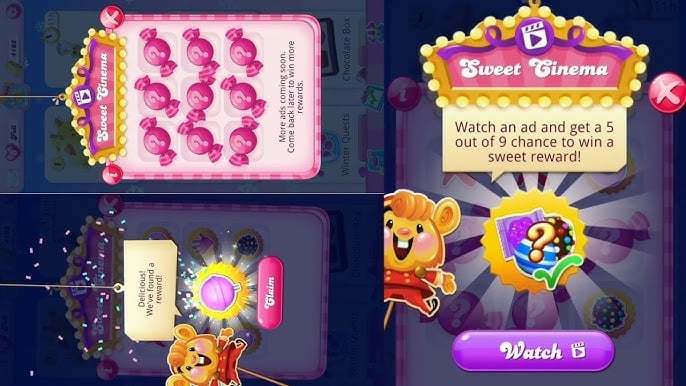

Save up to 50% on FoxData plans from Nov. 21 to Dec. 8 and power up your app growth.
Design's Role in Candy Crush's Monetization Strategy
Effective design is crucial to Candy Crush's monetization success, linking game design and monetization strategies seamlessly.
-
Simplicity and Challenge: The game's match-3 mechanics are simple to grasp yet difficult to master, retaining players with its challenging levels, offering a sense of accomplishment upon completion. This balance between simplicity and complexity significantly contributes to the game's popularity.
-
Accessibility: Candy Crush targets a broad audience. Its adaptable match-3 mechanics suit various platforms, from mobile touchscreen controls to PC click navigation, advancing the game's reach across different devices.
-
Continual Updates and LiveOps: Since its 2012 release, Candy Crush consistently introduces new updates and levels, extending from 6,000 in January 2020 to 14,000 levels by 2023. This constant addition of levels keeps players engaged long-term without needing to switch to new games.
Through these strategies, Candy Crush successfully integrates monetization with game design, creating a profitable and enduring gaming experience.
💡Read More: Leading Trends in Mobile Game Monetization
Now just join FoxData and check more Games Trends for free!🎮
Curious to experience the power of our services? Sign up for a Free Trial today! 🕹




